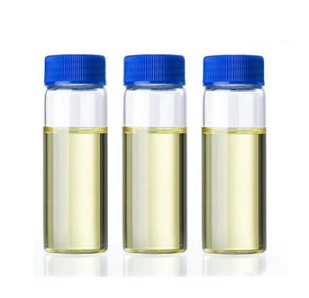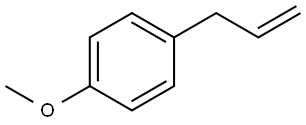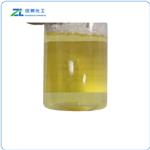Description
(E)-Anethol is a phenylpropanoid that has been found in
P. anisum seed oil and has antifungal and antioxidant activity. It is active against fermentatively growing
S. cerevisiae under hypoxic, but not normoxic, conditions (MIC = 100 μg/ml), and against
C. parapsilosis when used at a concentration of 15% w/w. (E)-Anethol has antioxidant activity in a Trolox equivalent antioxidant capacity (TEAC) assay but does not scavenge 2,2-diphenyl-1-picrylhydrazel (DPPH) radicals in a cell-free assay.
Chemical Properties
trans-anethole is a clear colorless to pale yellow liquid and has a characteristic anise, sweet, spicy, warm odor and corresponding sweet taste.

Anethole (1-methoxy-4-propenyl-benzene, isoestragole) is an alkoxypropenylbenzene derivative and an important favoring component of essential oils of more than 20 plant species. Essential oils from seeds of anise (Pimpinellaanisum L.), star anise (Illicium verum Hook.f), and sweet fennel (Foeniculum vulgare Mill. var. dulce) are the main sources used for the isolation of anethole. Two isomers of anethole occur in nature: E- or trans-anethole and Z-or cis-anethole. About 90 % of natural anethole is trans-isomer. Besides separation from natural essential oils, anethole is obtained using the rectification of crude sulfate turpentine and/or the organic synthesis starting from methylchavicol or anisole and propionic anhydride. Compared to natural compound, synthetic trans-anethole is impurified with higher amounts of cis-isomer.
Occurrence
Anethole is methyl ether of oestrone and has been found in fennel, aniseed, coriander, and many other volatile oils.
Uses
flavoring agent in food, dentifrices, etc.; in perfumery for soap, etc.; in pharmaceuticals as flavor; in photography and in
embedding materials in microscopy; some perfumery uses (fennei; absinthe; Hyacinth jacinthe; detergents; magnolia). Natural
occurrence: star anise
Uses
platelet aggregation inhibitor
Uses
expectorant, gastric stimulant, insecticide
Uses
trans-Anethole is used to inhibits lung and forestomach carcinogenesis, used as carbon and energy supplement in the culture media of Pseudomonas putida strain. It is also used as used as a flavoring substance.
Definition
ChEBI: Anethole is a monomethoxybenzene that is methoxybenzene substituted by a prop-1-en-1-yl group at position 4. It has a role as a plant metabolite.
Preparation
By esterification of p-cresol with methyl alcohol and with subsequent condensation with α-cetaldehyde (Perknis); the
most common method of preparation is from pine oil. By fractional distillation of the essential oils of anise, star anise, and fennel;
the anise essences contain an average of 85% anethole; fennel, from 60 to 70%.
Preparation
By isomerization of estragole using alcoholic potassium hydroxide as agent (Arctander, 1969).
Taste threshold values
Taste characteristics at 10 ppm: sweet, anise, licorice and spicy with a lingering, sweet aftertaste.
General Description
trans-Anethole is a naturally occuring flavouring agent. It has insecticidal, larvicidal, and antimicrobial properties.
Biochem/physiol Actions
Naturally occurring phenylpropene derivative that is estrogenic at lower concentrations and cytotoxic at higher concentrations to cancer cell lines. The cytotoxicity is related to the metabolism of trans-anethole to 4-hydroxy-1-propenylbenzene.
Anticancer Research
It is one of the major constituents of essential oil of fennel and anise and belongs tothe class of phenylpropenes. It has the capacity to block both inflammation andcarcinogenesis. It is an antioxidant and also a suppressor of NF-κB activation byIκBα degradation (Aggarwal and Shishodia 2004).
Metabolism
Anethole is metabolized by oxidation of the propenyl group and is excreted as anisic acid (Williams, 1959). The metabolism of trans-anethole used in the preparation of anis-flavoured alcoholic beverages was studied in the rabbit and rat after iv and oral administration. It was excreted rapidly from the animal regardless of the method of administration. After iv injection it was found concentrated in the liver, lungs and brain; after oral administration, absorption was slight and most of it remained in the stomach. Ethyl alcohol has no effect on the metabolism (Le Bourhis, 1968).
Solubility in organics
Miscible with alcohol and oils, poorly soluble in Propylene glycol and Glycerin.
Dosage
The FDA "White List" permits the use of Anise oil in concentrations up to 3500 ppm. (Anise oil contains more than 90% Anethole).







